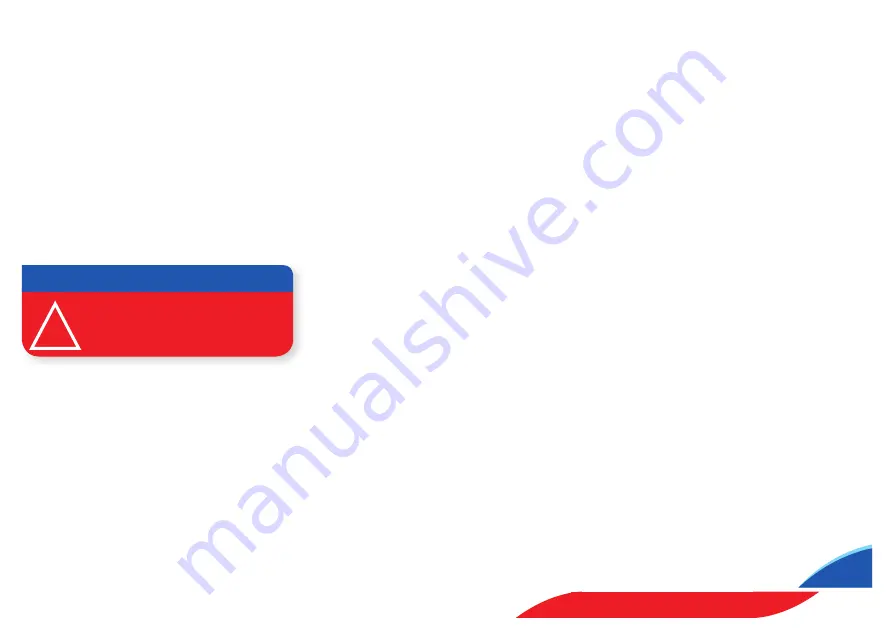
p. 19
Owners Manual
Alloy and Steel Wheel Stud Patterns
Alloy 9”, 10”, 13” and 14” wheels - stud size: 7/16”,
pitch circle diameter: 108mm (41⁄4 commonly
called HT).
Tyres
Correct tyre pressures are located on the yellow
sticker at the front of your trailer and on the tyre’s
side wall. Regular checks for the correct inflation
pressure and uneven tyre wear should be carried
out. It is recommended for maximum tyre life that
the tyres be rotated on the rim every 12 months
or 6 months for heavy use. It is also recommended
that a spare wheel is carried along with the tools
required to change them.
Trailer Frame Drainage
It is important that the drain holes throughout the
trailer frame are kept clear and checked on a regular
basis. This allows for drainage of any trapped water
to exit the frame.
Trailer Lighting
Lighting and wiring need a six month inspection
to ensure that there is no cracked lamp lenses, no
corrosion has got into the wiring, lamps and that all
functions of the lamps are working.
Check tail lights and turn signals work when
attached to the towing vehicle. Before backing
the trailer into the water, disconnect the light plug
from the car. This will greatly reduce the chance of
blowing out the trailer lights.
Hand Winch
Never overload your winch, use it only for the
application it has been supplied for on normal
ramp conditions.
When you finish with the trailer remember to check
that the winch strap or wire is dry to avoid rusting
on the winch drum. Oil the winch shafts, bushes
and gears periodically when needed.
Fitting Boats to the Trailers
The boat should sit hard on all keel rollers.
Galvanised parts should not be touching any part
of the hull and the side Teflon skid pads should be
positioned as far out from the keel as possible then
to be adjusted up firm against the hull of the boat.
If your boat doesn’t come up straight after
trailer adjustment and all skid pads and roller
measurements are correct, then check that the
boat sits horizontal in the water. Even a very slight
lean will bring the boat up to one side. Move fuel
tanks, fishing gear etc to bring the hull horizontal
to the water.
The boat should be fastened to the trailer by a
cable or strap from the bow eye to the winch, plus
a safety chain or cable from the bow eye to the
winch stand or trailer tongue. The stern of the boat
should be tied down to the trailer.
The boat transom-to-trailer tie down straps and
winch lines are designed for normal towing
conditions on paved roadways and moderately
rough secondary roads (at slow speeds only). We
recommend the use of additional straps or rope
tie downs for securing the boat to the trailer,
particularly for longer trips or whenever you
expect to encounter rough roads. The use of a
motor support bracket is also recommended.
TRAILERING TIPS
Remember to close all hatches and doors in the
boat before trailering. Store all loose equipment, so
it cannot slide, fall or blow out. Ensure the canopy/
bimini is down and secure and that all seating
inside the boat is also secured. It is possible for
seats to move while travelling – ensure all seats are
strapped down and securely fastened.
Do not use your boat as a trailer. Do not carry excess
weight in the boat while trailering or travelling on
the water.
When reversing, engage the reverse lock on the
trailer hitch. This will lock on the trailer hitch and
stop the trailer brakes operating when reversing.
Remember to disengage the lock when the
reversing operations are complete.
Too much or too little tongue weight will cause
difficult steering and tow vehicle sway. Generally
5% to 10% of the boat and trailer weight should
rest on the tongue.
Wheel nut torque on the trailer wheel
and the spare wheel should be checked at
regular intervals.
ATTENTION
!






































